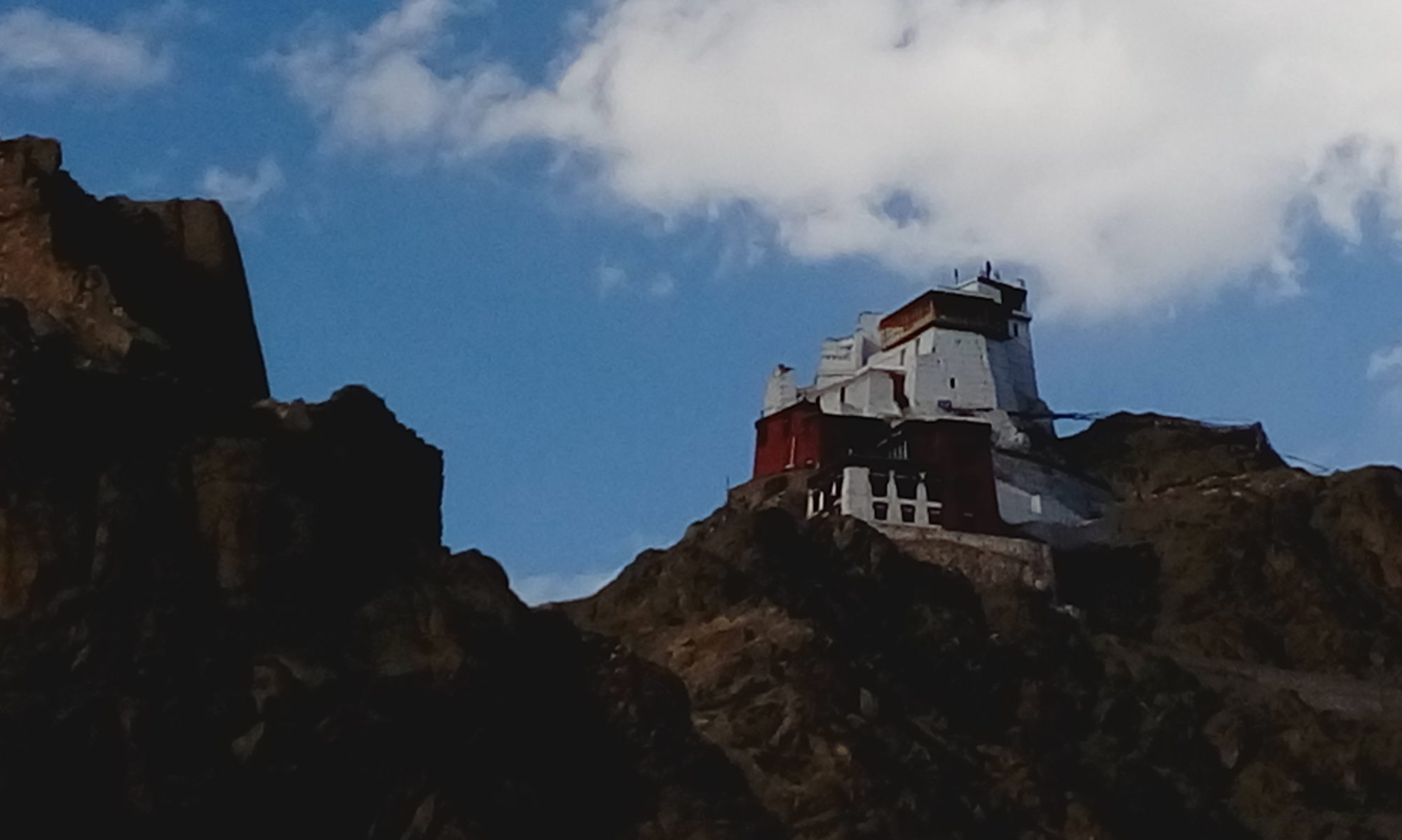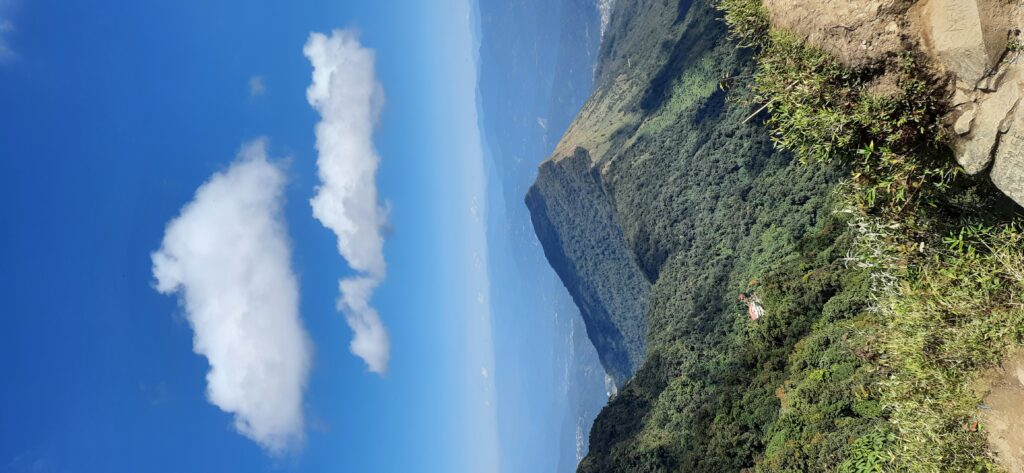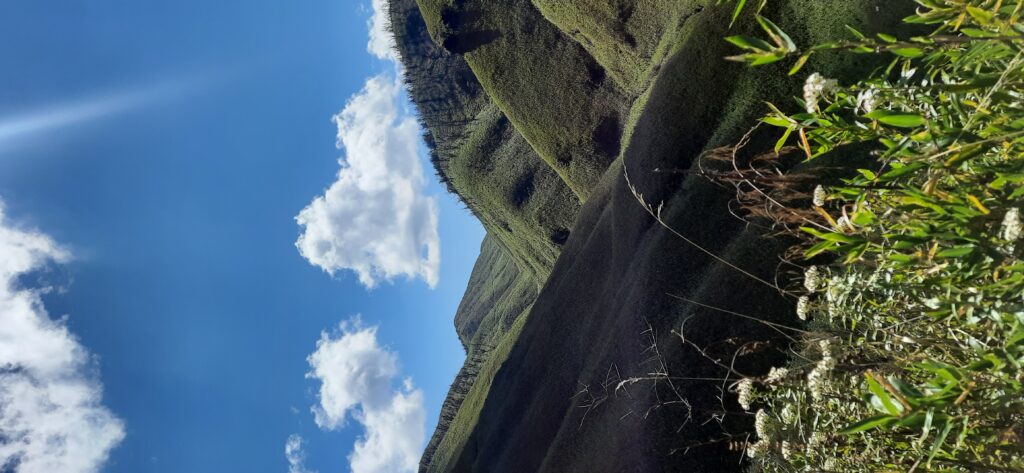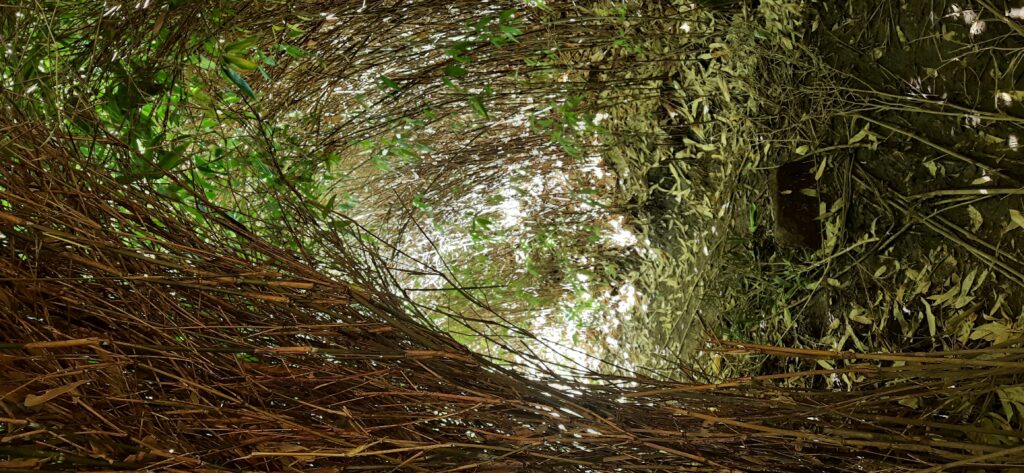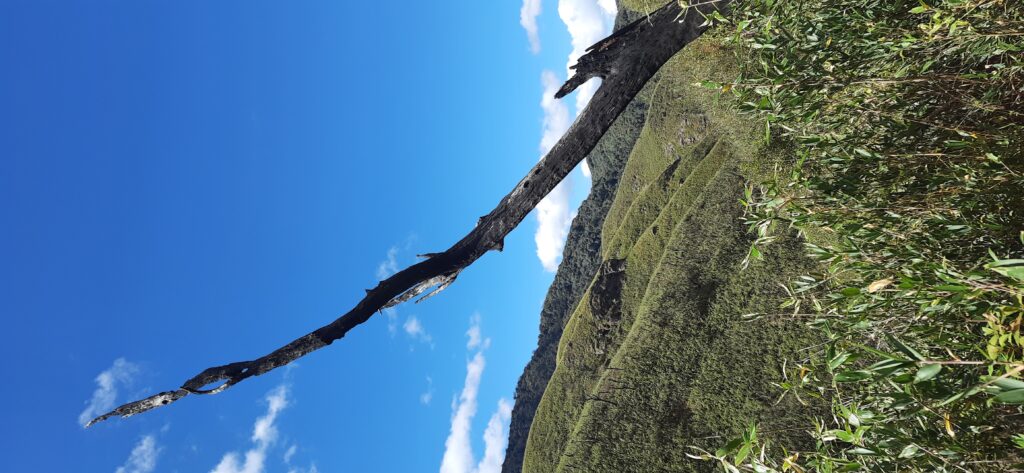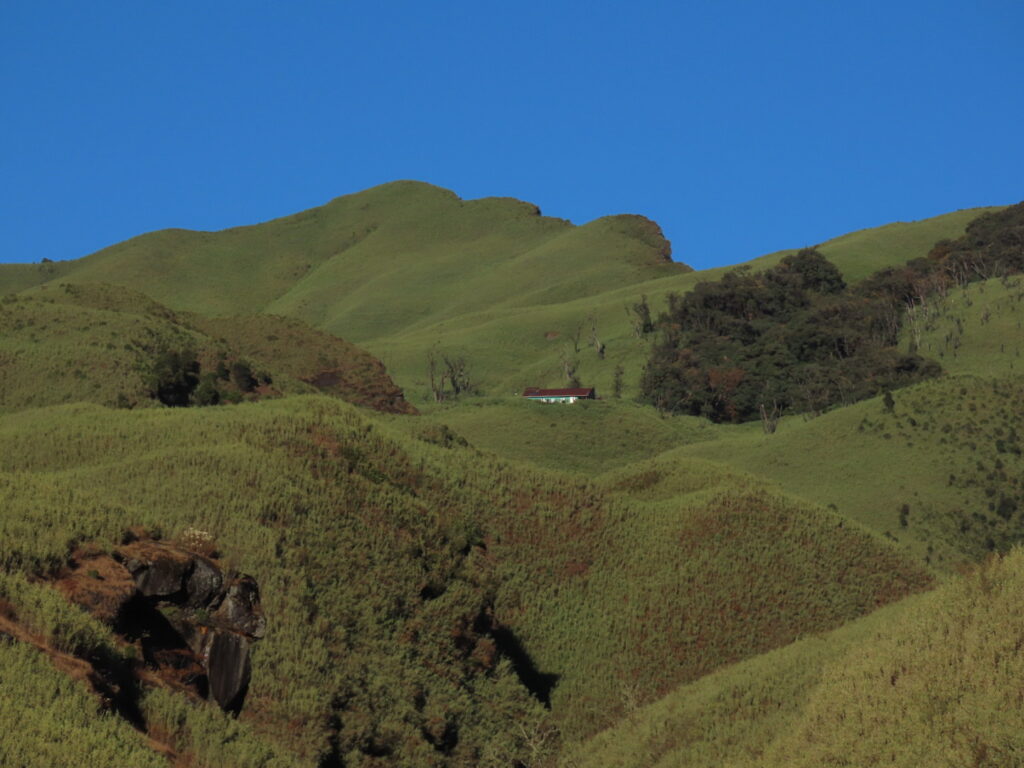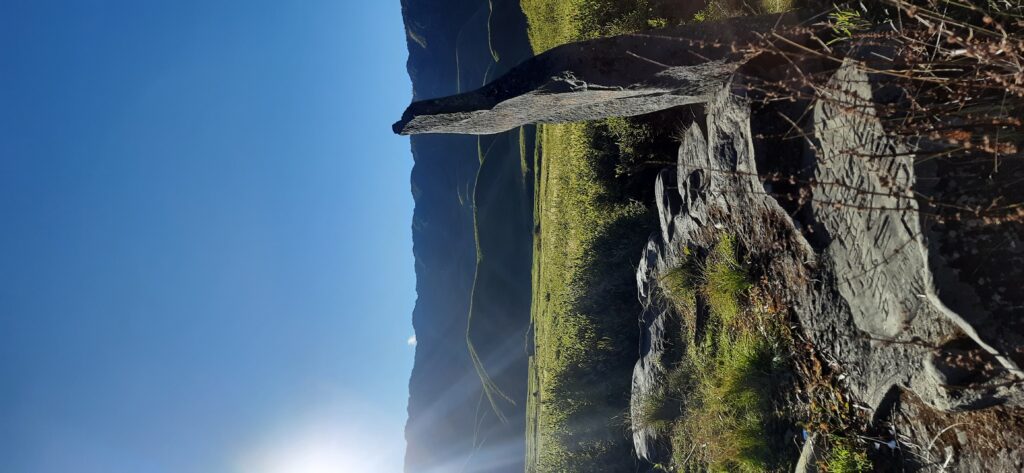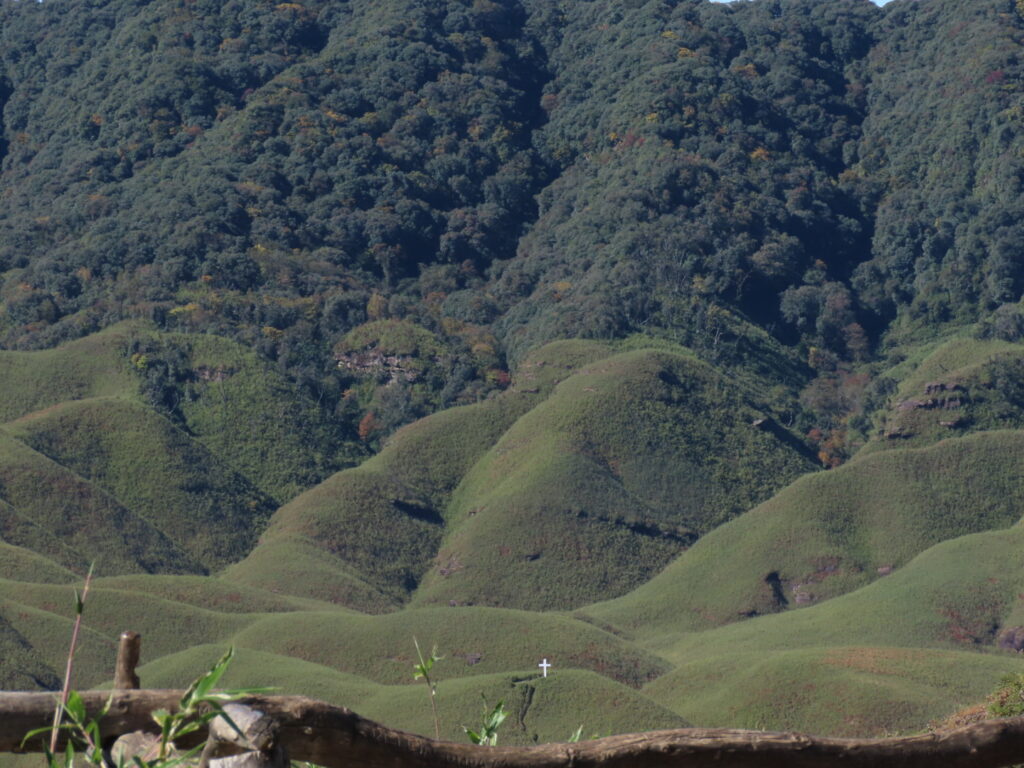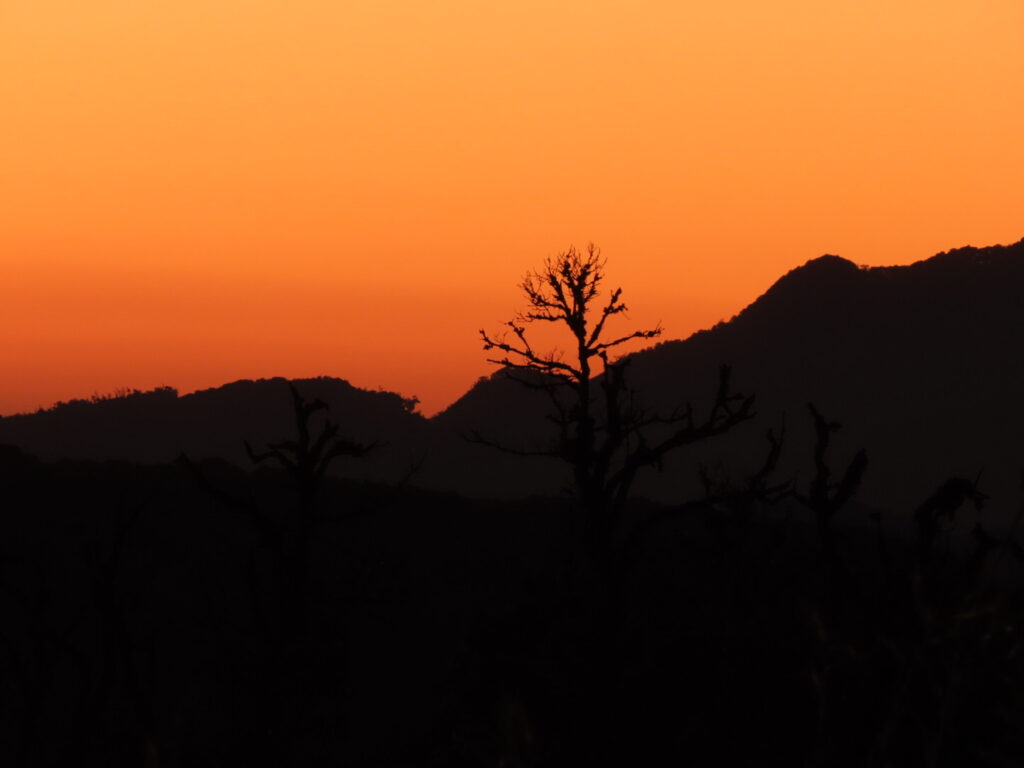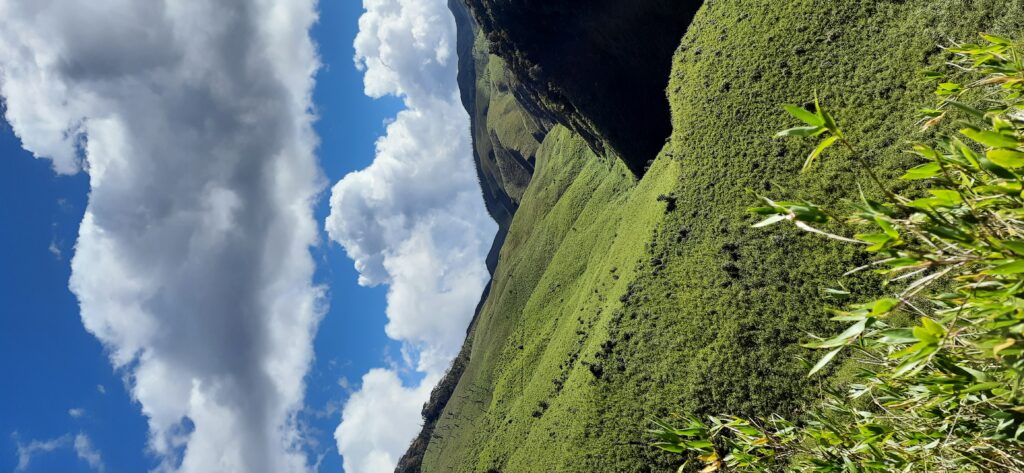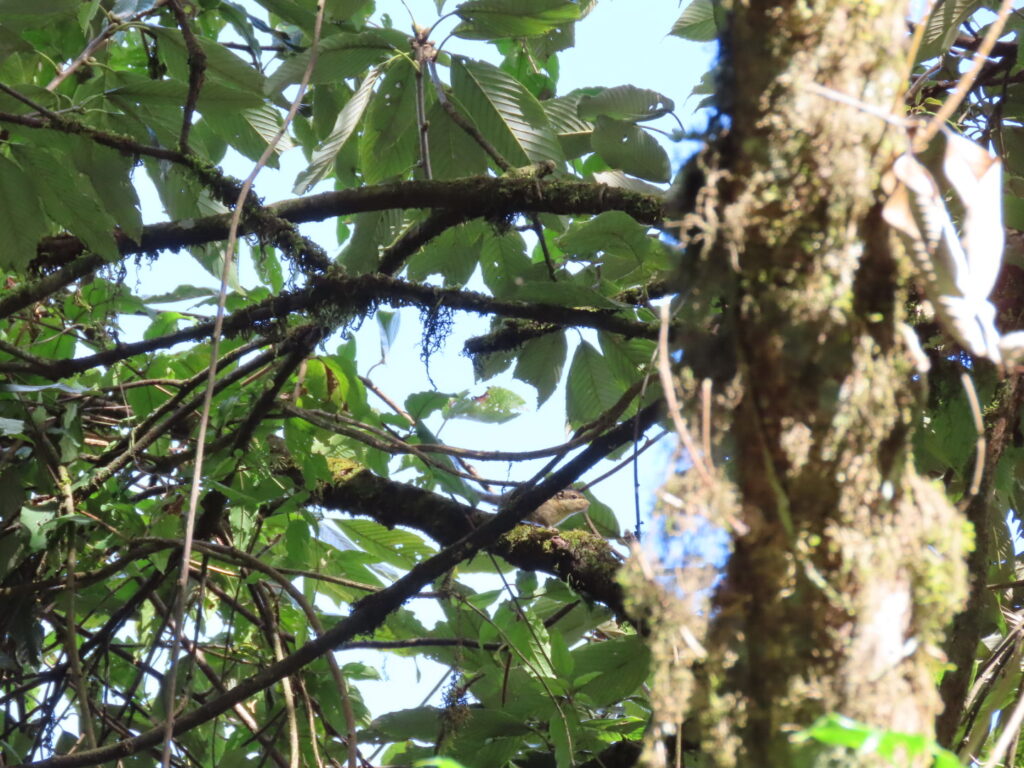The poinsettias grow wild along the road as we enter Kohima. The red leaves announce Christmas is round the corner. Infact the festive season is evident as we drive out of Dimapur. The traditional gates to the ‘model villages’ are colourfully decorated. Enroute small houses have red stars tied to bamboo poles. A religion from far away has found a home and eco support! Makeshift shops along the way sell potted hybrid red and white poinsettias. So, so tempting!
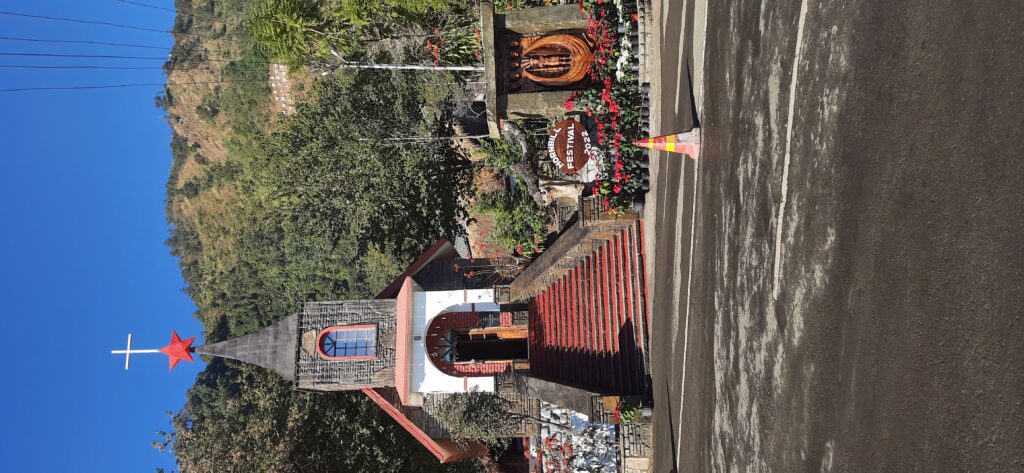
Then we cross the funereal shops…. Stocked up with a profusion of bouquets, arrangements and wreaths, at first glance I mistake them for flower shops. Then I spy a polished coffin lurking behind cascading artificial flowers….. what ?? When I look for the shop names, I see boards announcing ‘The Final Resting Place, The Last Journey’…okay then…
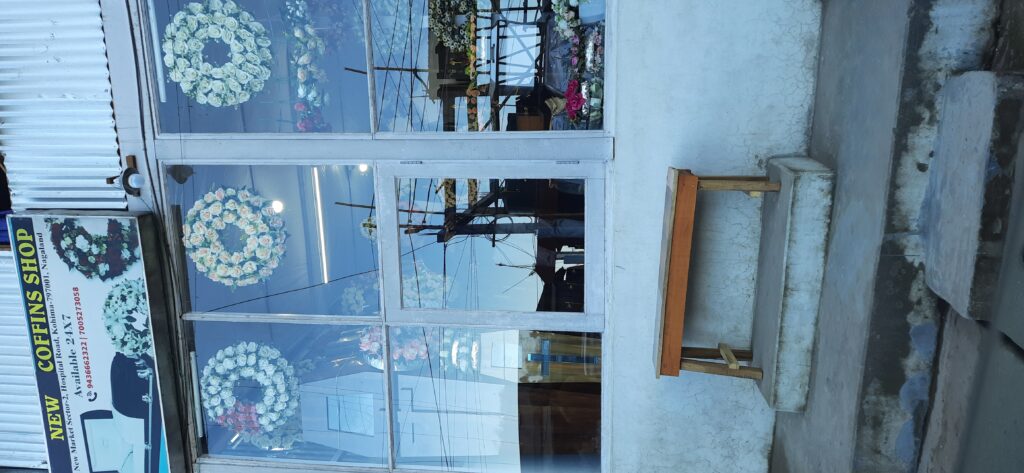
Night falls by the time we reach Kohima and driving on the dusty, broken road the lights of the capital draped over several hills are visible from a distance. A traffic snarl so typical of a hill station greets us. Most come for the Hornbill Festival but Kohima has lots more to offer than a bed and breakfast for the visitors. What should be on your itinerary while visiting this quaint hill station?
Beyond Kohima go- Into a Bamboo Bowl: A Hike to Dzukou Valley
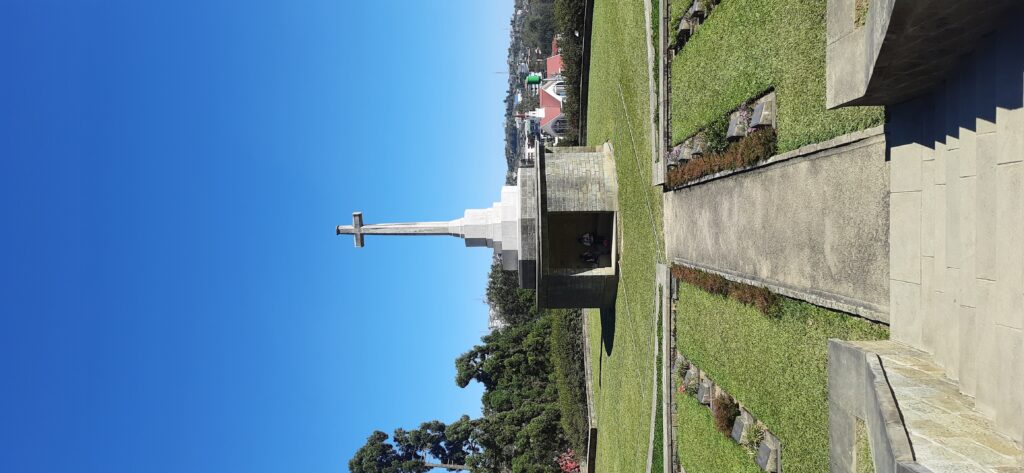
Kohima’s War Cemetery
Standing in the heart of town above the traffic crossing where we got stuck in the night is the stone with the famous epitaph ‘When You Go Home, Tell Them of Us and Say For Your Tomorrow, We Gave Our Today.” Set in the War Cemetery’s lowest step in an alcove, these words on the tall obelisk have been oft quoted. Kohima is one of the few places in India where a World War II battle was fought. A battle so fierce and bloody, it laid waste thousands of lives and earning the sobriquet- Stalingrad of the East.
Read about a lost path, a forgotten road in- Discovering Digboi’s 3 Must-Dos
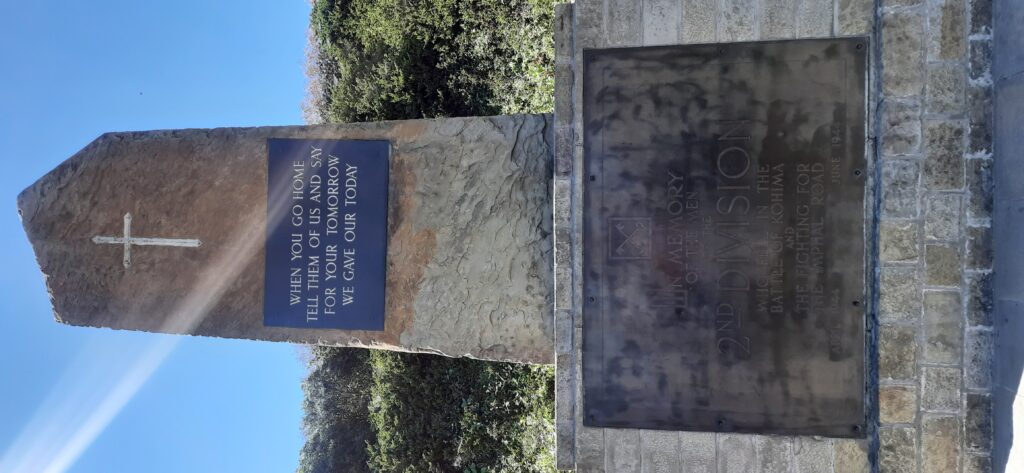
The war cemetery is laid out on the ridge where the Deputy Commissioner’s house stood, with a tennis court on its estate. Nothing remains of the house but the tennis court on a higher step is marked out. A band practises somewhere on the premises as we slowly walk around the terraced lawns with rows upon rows of stone markers with bronze plaques stating names and touching messages, giving glimpses of loved ones lost in honour, names that cut across creeds, cultures and continents. The tunes of ‘The Last Post’ and ‘Rouse’ wafting around make the experience even more poignant. A cherry tree grafted from one that stood here during the battle survives like another memory kept alive.
Read what lies- Along the Lohit on the Long Road to Walong
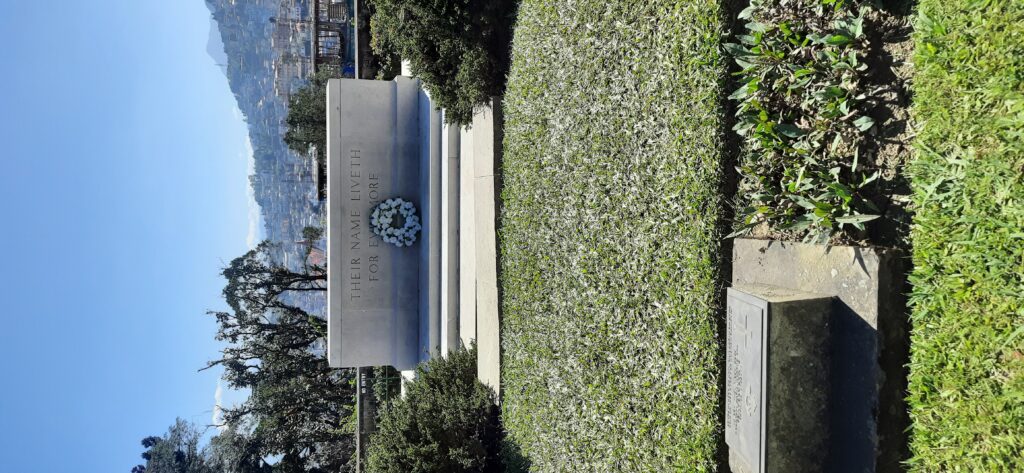
The Cathedral of Kohima
The religion might have come from another part of the world but the structure of the most important church in Kohima is visibly native. The first church in Nagaland was set up in 1872 but as the church of the Bishop of the diocese of Kohima, Mary Help of Christian’s Cathedral is not only important but its architectural rooting sets it apart. Inspired by the traditional Naga house, it is all soaring angles outside. Its spacious, vaulted interior is held up by steel girders.
Read about the eclectic collection of the- 3 Churches in Mhow: Discovering Obscure History and Outstanding Carols
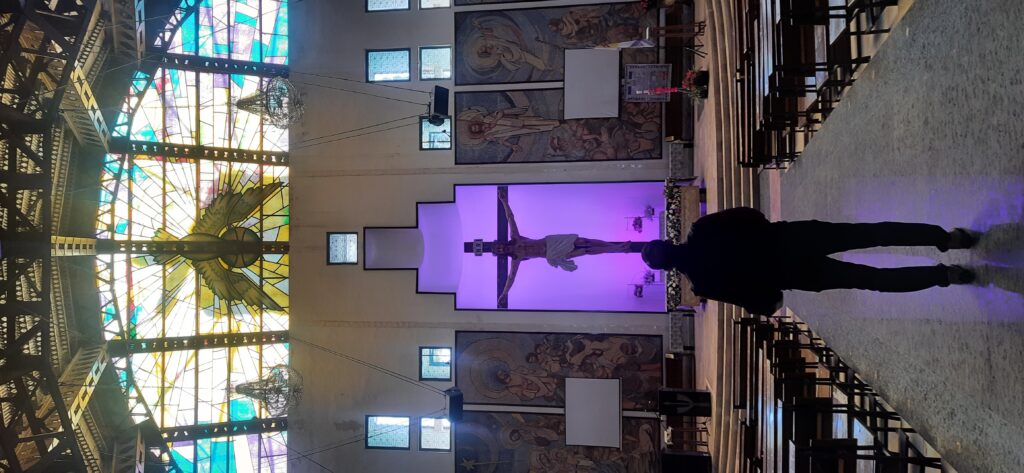
Painted glass above the altar lets in ample light to show a semi-circular seating and the revolving wooden doors carved with traditional motifs among others open to steps leading to a ground with a view. A wooden crib here has supposedly been made from wood of an olive tree from Bethlehem. Kohima’s story is somehow linked to the Japanese…the funds for the church came from survivors and families of the Japanese soldiers in remembrance of their ones lost here in battle.
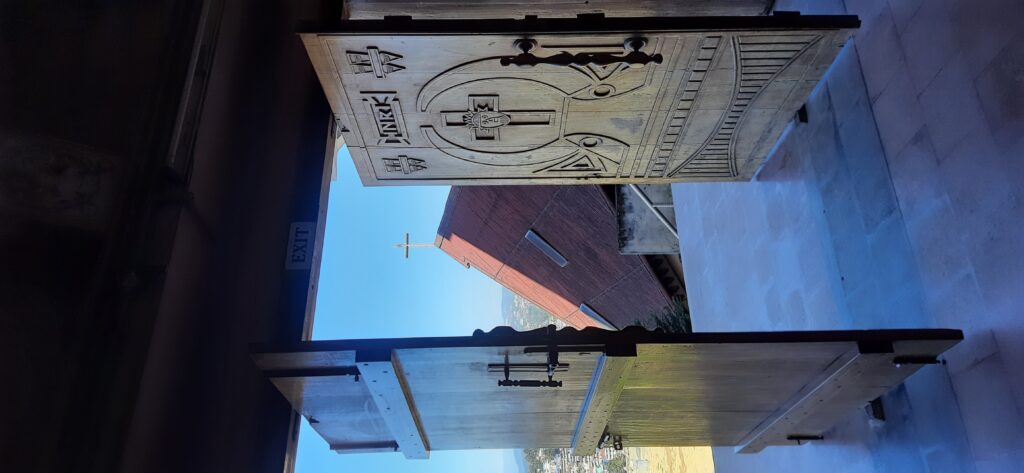
Main Street Night Market
I couldn’t find time to visit the famed Mao market on my flying visits to Kohima but I was not going to miss out on the night market on the main market street. During the Hornbill Fest the road closes to the chaotic traffic that plagues it during daytime and the street market keeps time with sunset. It hits the nose and makes me salivate, but I take my time. I walk the length of the festively lit up road lined with makeshift stalls, some with tables to dine, to see the fares and build up an appetite. Meats are being dabbed in oil, grilled, fried, doused in sauces. The pork momos come with a fiery chutney (This is the land of the Raja Mircha!), the sausages and tender grills on thin bamboo skewers, the crickets are fried crisp and I am allowed to sample one but the larvae are too generously packed on a long skewer. I pass.
Read what could not be passed on in –Satiating Nostalgia Under the Winter Rain at Junia
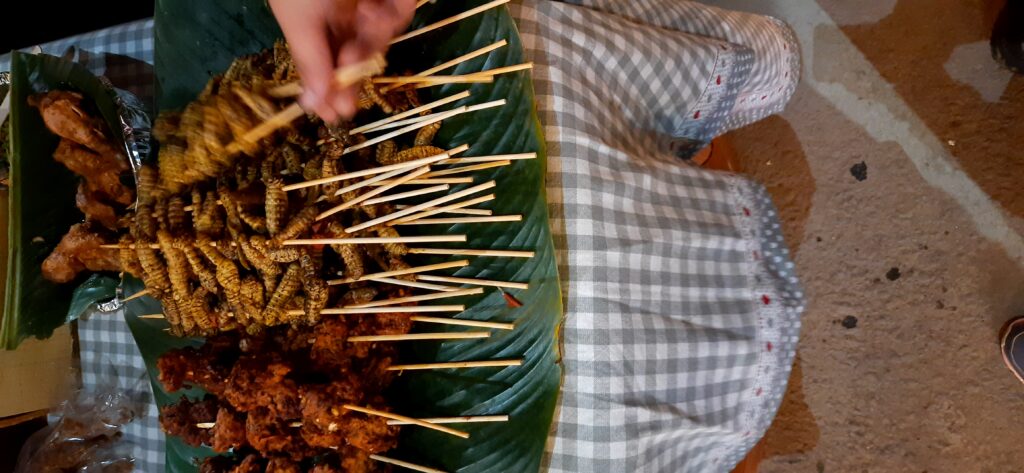
Thukpa is soul food and cannot be passed on, even here. At one stall the chatty young girl serving is from the Sumi tribe and teases the boy wearing a jacket with a bull, manning the counter. A mithun he corrects her, as he is from the Ao tribe. Another boy is wrapped in a Sumi shawl I am told. (By and by one realises it is not just a ‘Naga shawl’! Its everything! From a skirt to a dress to… well, a shawl!)
What else to do on a short holiday?- Part Two- What Not to Miss on a Weekend Vacation in Shekhawati
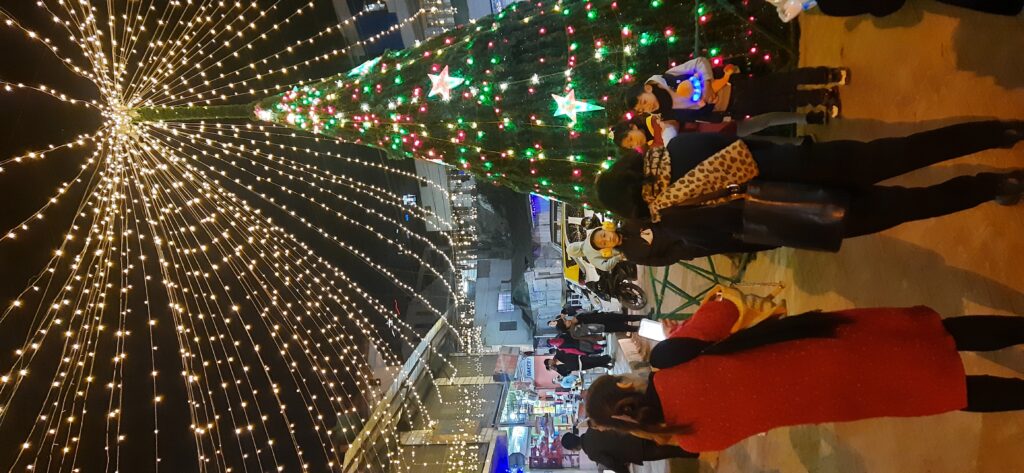
There are game stalls, stalls selling knick-knacks and souvenirs and ofcourse lots of eateries. At one end a group of men crowd around a table and let up exultant shouts now and then. Gambling for live chickens I discover later. Luck lays out a feast for some and nobody seems to gamble their winnings!
This capital city is a melting pot where influences from far flung lands add a piquant flavour to the local tribal cauldron. The final dish served is worth sampling and savouring.
Fact File-
Getting there–
Dimapur is the nearest railhead and airport.
It is about 70 kms but with the road widening and construction takes a minimum of 2 hours to reach by taxi.
Food–
At the night market the skewers start from 100/- but options for vegetarians are limited and the stalls serve mostly meats.
Miscellaneous-
Entry at the War Cemetery is free. It is shut on Sundays.
Sunday is a day for prayers and rest for the entire state!
